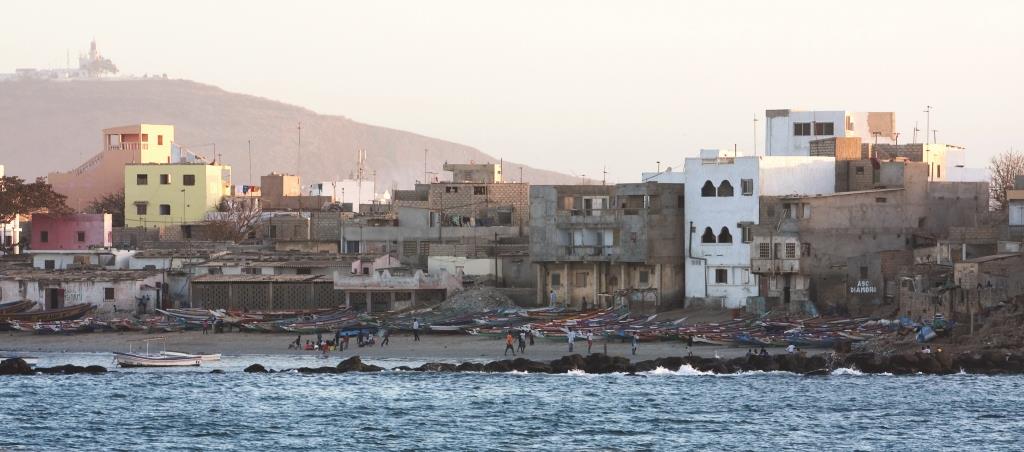The French-speaking country, perched on the western tip of the continent, boasts one of the best developed tourist industries in Africa, with six major game parks and reserves. Senegal is home to nearly 13 million people and has remained stable even as neighbors Mali and Guinea and nearby Côte d’Ivoire suffered military coups and political upheavals.
But Senegal had its share of political violence in January 2012. Dakar burnt when the constitutional court allowed incumbent Abdoulaye Wade to seek a third term in office. The 85-year-old’s decision violated the country’s constitution; protestors set fire to large parts of the city. In the end, Wade was defeated by Macky Sall.
In June, on his first official visit to Sub-Saharan Africa, United States President, Barack Obama, visited Senegal to strengthen business relations and encourage investment. Obama’s visit recognized the United States’ commitment to democracy, in a region where dictators and civil strife are common.
A few weeks later, in July, rating agency, Standard and Poor’s (S&P) revised Senegal’s sovereign credit rating outlook to stable from negative. S&P believes the Senegalese government will succeed in cutting its fiscal deficit and carrying out reforms that will lead to faster economic growth. Moody’s Investor Services rated the West African nation B1, before its planned sale of $500 million of Eurobonds in 2011. Moody’s rating is equal to the B+ rating by S&P, along with Nigeria, Kenya, Mozambique and Zimbabwe to name a few.
Senegal earns most of its foreign exchange from fish, groundnuts, phosphates, tourism and services. The phosphate industry has struggled for two years to secure capital and its reduced output has hurt GDP.
Loading...
In 2007, Senegal signed agreements with foreign companies for new mining concessions for iron, zircon and gold. Various foreign investors have agreed to modernize Dakar’s port and create a new special economic zone.
Its agricultural sector is subject to rainfall and changes in world commodity prices. Following droughts that cut agricultural output in 2011, the West African nation’s economic growth is expected to accelerate this year. According to a Reuters poll, Senegal’s GDP should expand to 4.4%; the International Monetary Fund (IMF) hopes the completion of infrastructure projects, recovery in its agricultural sector and mining projects will boost it further.
The IMF also expects Senegal’s current account deficit to decline, but remains fearful it could go high because of imports associated with investments in the energy and mining sectors. In September, the IMF urged the Senegalese government to maintain its budget deficit target—expected to be reduced to less than 5% of GDP this year—in order to ensure fiscal sustainability.
Senegal relies heavily on donor assistance and foreign direct investment, which in 2000 represented around 32% of overall government spending. Under the IMF’s Heavily Indebted Poor Countries debt relief program, Senegal will benefit from eradication of two-thirds of its bilateral, multilateral and private sector debt.
The country rose from the ashes through an economic reform program following its economy’s contraction by 2.1% in 1993. A year later, with the help of the international donor community, Senegal began a 50% devaluation of the country’s currency; government price controls and subsidies were steadily dismantled. It made for a real turnaround with a real GDP averaging over 5% annually over a decade. Annual inflation was pushed down to low single digits.
Following the country’s 2012 growth at an estimated 3.7%. The African Development Bank (AfDB) believes that growth will accelerate this year and is projected at 5.1% in 2014. AfDB says the growth projections are calculated in the hope that the government’s socio-economic program will be implemented along with the continuation of a toll motorway, the construction of Blaise Diagne International Airport, which is expected to handle around 10 million passengers by 2020, and other infrastructure projects.
Dakar, the melting pot capital city, is one of the busiest cruise ship ports in Africa and is home to around 1.5 million people. It’s impossible to miss the imposing Monument of the African Renaissance statue, when in the capital. As the tallest statue on the continent it stands at 49 meters on one of the twin hills, known as Collines des Mamelles.
Just off of Dakar’s coast is Ile de Gorée—the small island is a big tourist attraction because of its history as a slave trading port.
Dakar also lends its name to the Paris-Dakar rally, which was established after Thierry Sabine got lost on his motorbike in the Tenere Desert during the Abidjan-Nice Rally, in 1977. He came up with a new route starting in Europe through Algiers, in Algeria, crossing Agadez, in Niger, before finishing in Dakar. Most rallies took this route, until security threats in Mauritania forced organizers to cancel the 2008 rally. The following year it moved to South America and has stayed there.
As a member of the West African Economic and Monetary Union, Senegal is working towards greater regional integration with a unified external tariff and a more stable monetary policy.
The economy continues to suffer from an unreliable power supply, with widespread blackouts in 2006, 2007 and 2011, which led to public protests and unemployment. The government is working hard to solve the problem. High unemployment forces many to flee the country in search of jobs.
The country is one of the few on the continent to have issued a Eurobond, that is debt issued in a currency other than the that of the country or market in which it is issued. Eurobonds are attractive to investors because of their small par values and high liquidity. Senegal issued a $500 million 10-year Eurobond in May 2011 at a coupon of 8.75%, to raise funds to improve infrastructure.
In June, Reuters said the country is likely to issue another $500 million 10-year Eurobond this year at an interest rate of around 6%. The IMF said the bond would help the country close its financing gap and reduce its reliance on costly short-term financing from the regional market.
Loading...
